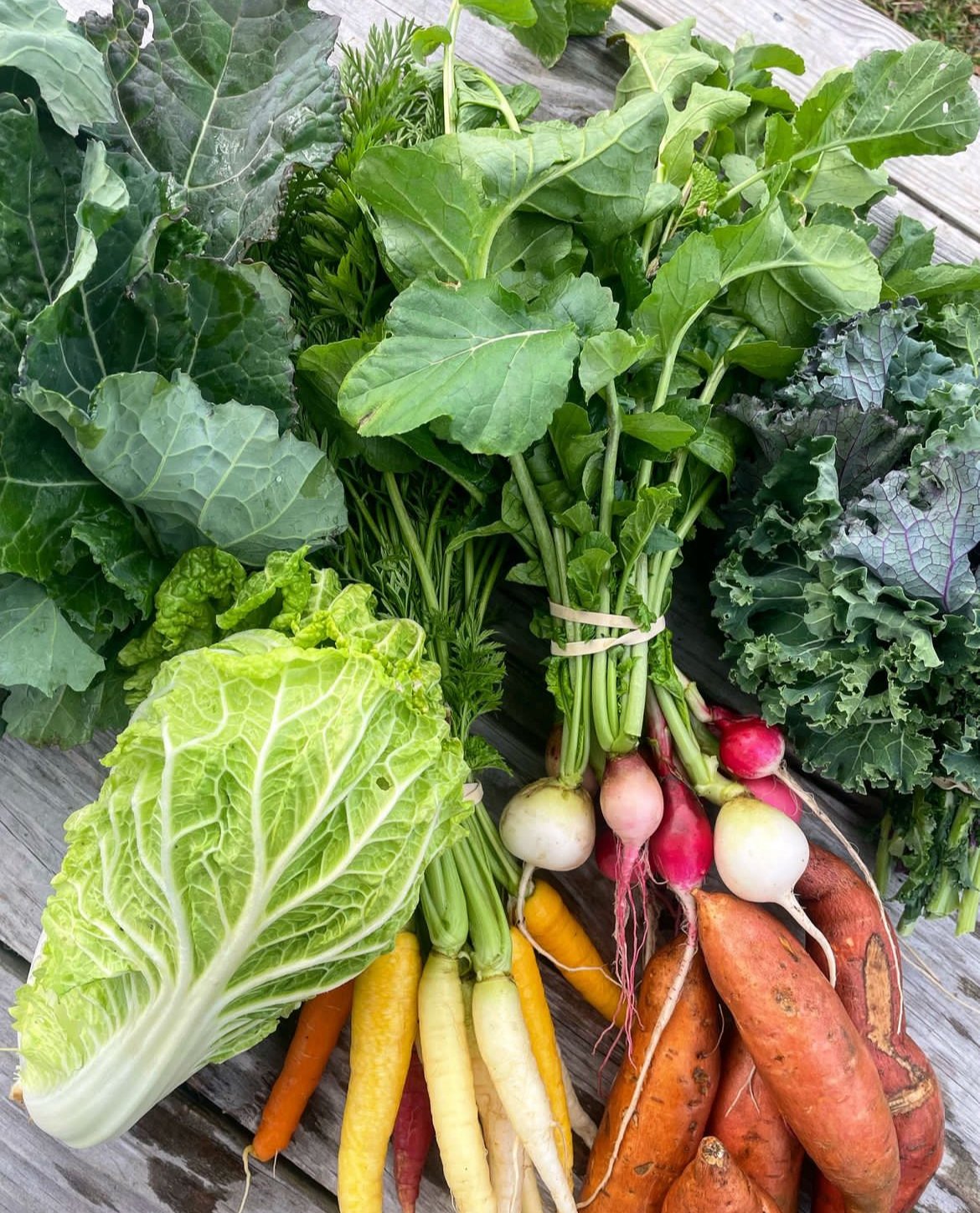Preparing for Fall: What to Plant in August
As the heat finally starts to break and the days slowly shorten, August becomes one of my favorite months in the garden not just because it means cooler evenings, but because it’s a second chance to do all of the things I told myself I’d do in the spring without the rush.
Why Bother Planting in Fall?
Cool-weather crops love the shift in temperature. They grow slower, which means more tender leaves and sweeter flavor. Pest pressure drops, weed pressure eases up, and watering becomes way less of a job. Plus, there’s something really grounding about tending the soil without the pressure of summer quickly approaching.
What We’re Planting (and How Much)
Here’s our go-to list for August and early September sowing, along with rough spacing and how many plants we strive per person as a couple who grows MOST of their own food. Note: this is based off of our eating preference. Notice certain veggies aren’t listed because we don’t tend to eat them as much!
Leafy Greens:
Kale – 12 plants per person; space 12–18" apart
Collards – 12 plants per person; space 12–18" apart
Spinach – 15 plants per person; sow 1" apart and thin to 3"
Swiss Chard -
Root Veggies:
Carrots: 50 per person; sow 1" apart, thin to 2–3" in rows 12" apart
Beets: 10–20 per person; space 3–4" apart
Radishes: 10–15 per person; sow 1" apart and thin to 2"
Turnips: 10–15 per person; space 3–4" apart
Brassicas:
Broccoli/Cauliflower: 10 heads per person; space 18-24" apart
Cabbage: 4-6 heads per person; space 18–24" apart
Herbs:
Cilantro: 2–3 plants per person; sow thick and thin to 4–6"
Parsley: 2–3 plants per person; space 6–8" apart
Dill: 3–4 plants per person; space 12–18" apart
Prepping Your Beds
Here’s how we get things ready before sowing:
Clear & Feed – Pull out what’s done and tired. Add compost or aged manure to recharge your soil.
Water Well – Fall seedlings still need consistent moisture, especially early on. Water in the mornings or evenings.
Mulch Lightly – Keeps soil temps stable and suppresses weeds. We use grass clippings, straw, hay, or mulch.
Offer Shade if Needed – If it’s still hot, use row cover, old sheets, or light shade cloth to help young plants get established.
Keep It Going with Succession Planting
Don’t stop after one sowing! You can plant quick-maturing greens and roots every 1–2 weeks through mid-September (maybe later depending on the weather). That way, you’re not stuck harvesting everything at once—and you’ll keep your kitchen stocked all season long.
Other Handy Tips:
Use a soil thermometer if you have one—many fall crops (like carrots and spinach) won’t germinate well in soil over 85°F.
Partial shade can be a secret weapon in early fall—especially for tender greens.
Keep notes! What you plant, when, what did well. It’s different every year, and your future self will thank you.
Fall gardening doesn’t have to be complicated. It’s steady, it’s quiet, and it’s deeply satisfying. Whether you're starting over or just adding a few rows to what's already growing, I hope this helps you feel confident to dig in. Here’s a simple planning chart to get you started.
I'll be posting updates from our garden (and probably a few surprises) over on Instagram and here on the blog. If you plant something, let me know—I’d love to hear about it.

